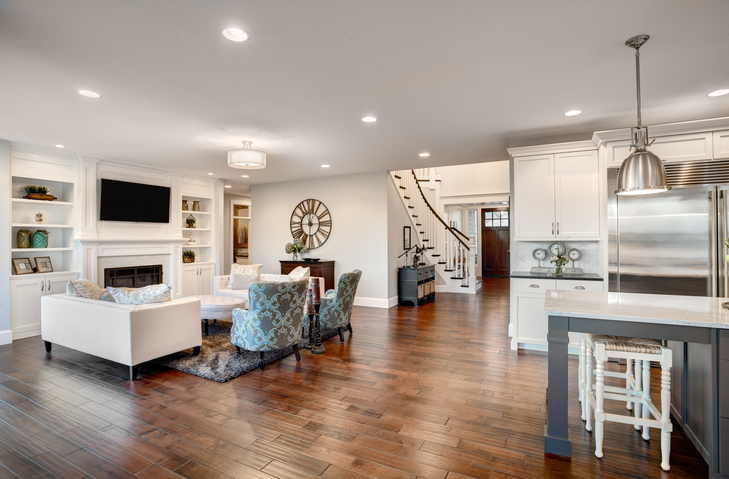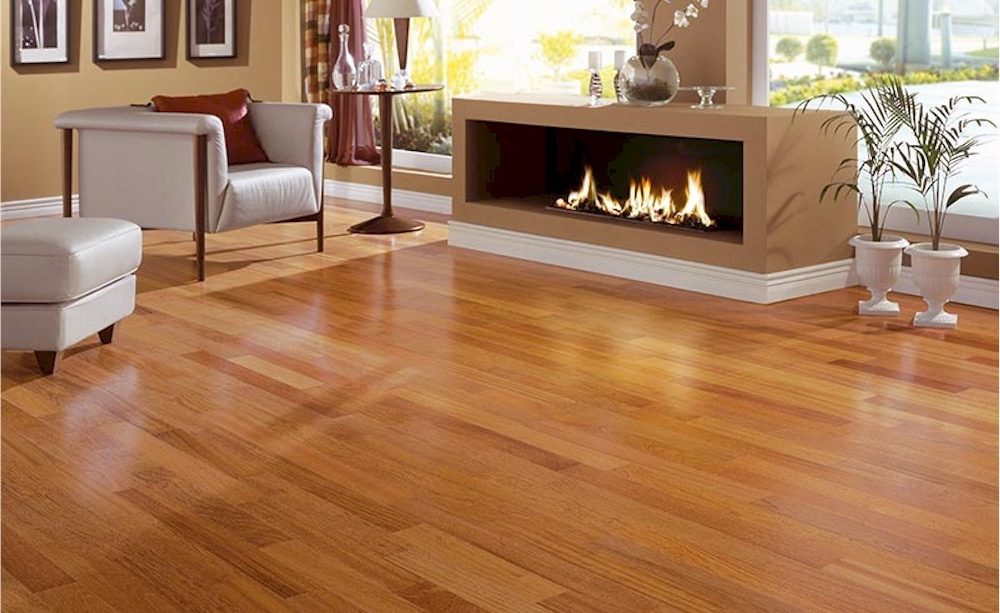Individuals typically have to brace themselves as they begin the frustrating procedure of looking for the best flooring for their home, yet they start to relax once they have that perfect sample clasped securely in their hands. But, what exactly are you going to make with that wood? It’s clear that you’ve thought about the wood types and stain, as those elements most undoubtedly affect the look of the room, but have you thought about the board width or setup pattern or ornamental touches …?
Don’t panic. Keep clasping your sample of wood and check out your choices. You’ll understand that you know what you desire much better than you thought.
Board width:
Board width can be divided into two categories, strip, and plank. The strip is less than 3″ broad and plank is greater than 3″ wide, typically getting as wide as 7″ and often even larger.
Strip floor covering can be utilized to develop nearly any appearance by putting together the right combination of species, stain, setup pattern, and furnishing. Strip flooring produces a running, linear impact that, just like a mirror or light paint colors, gives the impression of a bigger space. This makes it especially proper if you are attempting to achieve a modern look in your room, particularly if you select a choose grade hardwood with a uniform color. It is the more typical floor covering alternatives seen in both commercial and domestic applications.
Slab floor covering, with its broad boards, is more frequently used when trying to attain a rustic or nation search in the space. It too creates a direct effect in the space however the width of the boards doesn’t broaden the space as considerably. Although generally made from pine and considered the flooring used in old farm homes or colonial homes, designers are starting to acknowledge the beauty of this choice for modern designs also.
Installation patterns:
The installation pattern you pick for your area can have as much weight on the resultant look as the actual wood you put in. It will influence the method furniture will sit and the movement in the room. Although there aren’t that numerous choices, they are significantly different from each other, so pick well.
The most basic and common installation pattern is straight. Wood boards are set up parallel to each other along the length or width of the space. This pattern is fantastic for basic, contemporary styles along with any other design that wants to use the gorgeous look of wood flooring without flashy setups– this pattern lets the wood speak for itself. This is likewise the least costly of the readily available setup patterns, as it is the most straight-forward. All other patterns are more pricey because of extra wood and longer installation costs.
Random installation is likewise set up in a straight-forward, parallel pattern but it utilizes a mixture of floorboard widths. You can select the ratio of broad to narrow boards, what widths you wish to use, and how many boxes of each to buy. This offers you a great deal of versatility in regards to shopping and might save you cash if, for example, you buy leftover boxes from ceased series. These patterns typically lead to a rustic looking space, it includes a lot of motion to space and offers it an energetic feel.
Diagonal pattern setup includes a touch of luxury and formality to space without wandering off too far from traditional straight installation or including excessive to your final renovation expense. Boards are set up parallel to each other but they are laid at a 45 ° angle to the walls.

Parquet pattern setup is in some methods a lost art. Parquet installation is the laying of wood in a duplicated geometric pattern, frequently leading to a floor that has the appearance of a checkerboard, sometimes with more complex patterns within each checkerboard square. The choices for patterns are practically endless. This pattern gives a space of an extremely unique and sophisticated appearance reminiscent of European magnificence. Standard parquet installation is costly and unusual. It has actually now been replaced with prefabricated square modules with parquet patterns set out in a wood veneer.
In a Herringbone pattern, strips of wood flooring are laid in a diagonal zigzag strategy that looks like its name says. This pattern can be set out in the standard manner or with square modules, like the parquet styles. It provides the space a formal appearance similar to old European flats as well as museum halls.
Any of the listed installation patterns can be complemented or finished off with a boundary border or other decorative touches like mosaics. These can be constructed of wood, natural stone or alternative materials like glass and metal tiles. The boundary border frames the room in which it is set up, a function that works to separate the space from nearby areas and add the procedure to it. Inlays like mosaics add custom-made individuality to a room and assistance to substantially sway the style of a room towards the traditional, while still leaving you area to flex when picking the style of the real mosaic medallion or a decorative border.

